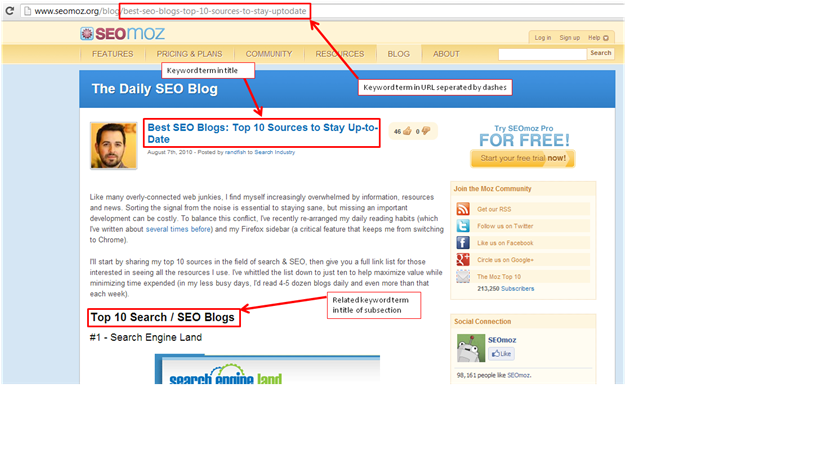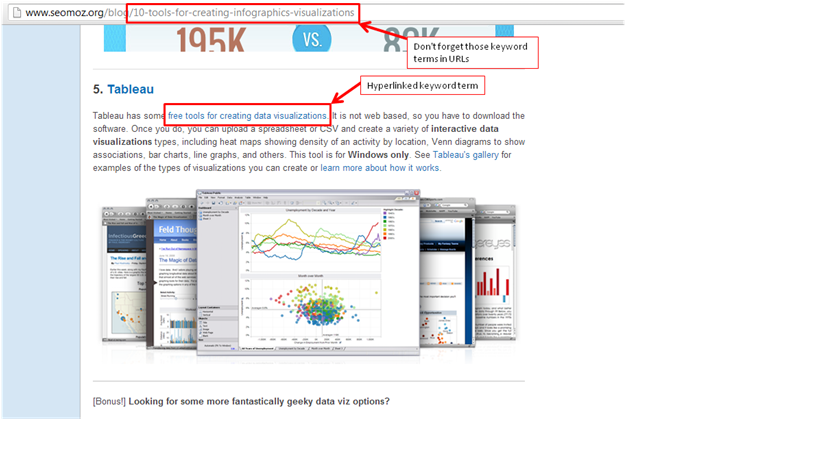Introduction to SEO for Blogging
Twenty years ago reaching the masses was arduous; as it turns out it still is today, which is why reading a current introduction to SEO for blogging regularly is an important practice for any communication professional. The available media were limiting on many fronts including frequency (the most frequent being newspapers, remember those? If not here’s a newspaper you can order…), reach (how many people read the same newspaper?) and likelihood of getting published. Today the last hurdle has been resolved thanks to the Internet; however the others remain very real. One cannot simply toss a blog on the net and reach 397 bazillion people. It requires work, and for the time being the majority of that work is search engine optimization (SEO). What follows is a beginner’s guide to optimizing a blog for the friendly algorithms (and people) over at Google.
Keep Blogging Simple
Before I get too far into this I want to relate a short story from my professional experience as a marketing analyst at Sprint Marketing. I don’t mean to sound boastful, but we are really great at what we do thanks in large part to a leader with exceptional experience and expertise in the field of online marketing, particularly SEO. For whatever reason, however, clients still tend to question our recommendations from time to time. One client who recently launched a new website along with a blog disregarded our advice to implement a blogging tool or content management system (CMS) such as WordPress. Our standing recommendation for blogs is to use WordPress – even for custom blogs. Developing off of this platform or a similar CMS ensures that most of the common SEO pitfalls of blogging can be avoided. What was the result for this client? They sunk thousands of dollars in developing a blog that wasn’t even as recognizable online as a basic WordPress blog. Moreover, it lead to management time being devoted to resolving issues surrounding the blog as well as burned up valuable consulting time to get it working correctly. The major take away? Start with what works and develop from there. Better yet, let somebody else do the development for you; I recommend checking out some of the best WordPress plugins for B2B SEO, and then decide if you can really afford to do better.
First Steps to Blog SEO Success
The first step to blog SEO success is determining what terms the blog post will rank for. These terms should be common search terms related to the blog content. Once they are decided upon they need to be seamlessly built into the content of the blog. These terms are called keyword terms; blogs rely on keyword terms to rank high in Google and other search engines. Ideally a blog will not target multiple keyword terms. At most it should have 2-3 major keyword terms with variations of the keyword terms built into the blog content.

Using a major keyword term in the URL structure and title of a blog is very pleasing to search engines.
The second step to SEO success is linking. Linking means creating hyperlinked keyword terms in the content that the blog is meant to rank for in web searches. These links should be both internal and external. Internal links link back to the article itself as well as other articles in the blog. External links are designed to pull in the SEO power of external sites. To help this blog rank higher for “how to do SEO for a blog” a link (like the one in this sentence) should be placed in the text that links to a known authority on the topic. Ideally that linked keyword term will not only be content found in the article it links to, but also a keyword term people are likely to type into a search engine. It is easy to overdo it, however, so keep internal and external links to a healthy minimum. 1 link for every 100 words of content is a good guide, unless the copy is exceptionally long.
More than links and keyword terms, sharing blog content will ensure its long term success. The algorithms that produce the results seen in search engines care as much, if not more, about how popular a site is (determined by followed links and search results clicked) and the amount of time people spend on the blog. A blog needs readers to perform well – and not just Facebook, Twitter, and other social media friends following it without spending time on the site. Some ways to garner real traffic is by including links to reputable bloggers’ sites, getting the same bloggers to syndicate content on their sites, and leaving the blog open to comments.
Additional Blogging SEO Tips
- Use a keyword research tool like the one found in Google Adwords.
- Add keywords to an RSS feed to stay on top of the most current content on the web.
- Participate in online conversations around the blog topic and link back to the blog in posts.
- Break the copy up with related images, videos, and other media.
- Don’t forget to add tags to the media!
- Follow your competitors and their readers for inspiration – and to help with originality (this blog may never rank well because a very high number of blogs exist already covering this same topic).
- If you are not using a blogging platform like WordPress which does it automatically for the site, be certain to block duplicate content.
- Load an analytic tool, such as Google Analytics, on a blog to know what content is getting traffic then build off successes.
- Title and URL structure should reflect the main keyword term of the blog. This should also be the URL for the blog. For example, a blog with the keyword term “why I am awesome” hosted at www.amazingnikstuff.com would ideally have the URL www.amazingnikstuff.com/why-i-am-awesome/.
- Use Google authorship to build a strong reputation as a blogger.
- Make sharing easy by having social buttons built into the blog.
- Return to this introduction to SEO for blogging regularly and seek out more advanced materials to keep your skills fresh.


4 Responses to Introduction to SEO for Blogging